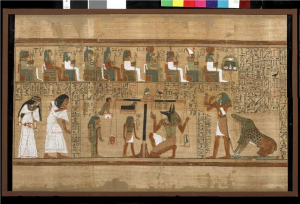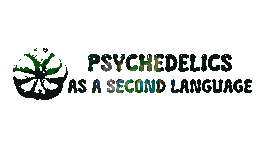Blue Lotus from the Book of the Death to Vape Shops and Pharmaceutical Shelves
In between many oneirogens used through history for lucid dreaming, hypnotic effects, and ritualistic purposes one dates back to ancient Egypt.
The blue Lotus flower (Nymphea Caerulea) also known as Egyptian Blue Lotus and The Sacred Blue Lily of the Nile, is claimed to be used since XVIII Dynasty, 1370/1318 bc in Egypt, the use of flowers is present in tombs, being the most prestigious example the tomb of Nebamun, a middle-ranking Scribe and found scattered over Tutankhamun’s mummified body when he was un-casked in 1922.
The usage of this plant has also been depicted in old papyrus regarding its ritualistic purposes and the biggest evidence is in the Ani Scroll also known as the Book of the Death.

Ani transcript:
“As if I’d slept a thousand years underwater I wake into a new season. I am the blue lotus rising. I am the cup of dreams and memory opening–I, the thousand-petaled flower. At dawn the sun rises naked and new as a babe; I open myself and am entered by light. This is the joy, the slow awakening into fire as one by one the petals open, as the fingers that held tight the secret unfurl. I let go of the past and release the fragrance of flowers.
I open and light descends, fills me and passes through, each thin blue petal reflected perfectly in clear water. I am that lotus filled with light reflected in the world. I float content within myself, one flower with a thousand petals, one life lived a thousand years without haste, one universe sparking a thousand stars, one god alive in a thousand people.
If you stood on a summer’s morning on the bank under a brillant sky, you would see the thousand petals and say that together they make the lotus. But if you lived in its heart, invisible from without, you might see how the ecstasy at its fragrant core gives rise to its thousand petals. What is beautiful is always that which is itself in essence, a certaintly of being. I marvel at myself and the things of earth.
I float among the days in peace, content. Not part of the world, the world is all the parts of me. I open toward the light and lift myself to the gods on the perfume of prayer. I ask for nothing beyond myself. I own everything I need. I am content in the company of god, a prayer that contains its own answer. I am the lotus. As if from a dream, I wake up laughing.”
In ancient Egypt, the flowers of Blue Lotus would be mixed in wine and shared as it was said to connect one to the Divine, introducing higher States of being and consciousness, for this reason, the plant had a major role in various ceremonies. However, the plant also had wide use as an Ancient Party drug, its euphoric effect, promote relaxation, and improvement of circulation characterized this plant as a potent aphrodisiac to sexually themed parties and religiously charged orgies.
This flower is often associated with the symbol of creation, rebirth, death, and the sun. The symbolism is connected with the life cycle of the plant that grows in murky waters once a year to bloom for only three days, just like the belief of the creation from primordial waters of Nun in Egyptian mythology.
This connection goes beyond these beliefs to actual connections with Gods, Nefertem is strongly associated with the flower it’s said that he emerged from the primordial waters in the Lotus itself. The narcotic effects of the plant may also have a connection with Gods like Bes, represented as a dwarf with a large head, goggle eyes protruding tongue, bowlegs, bushy tail and a crown of feathers, reported in the Chester Beatty Papyrus considered to be the oldest book in history, is believed to be the god responsible for protecting households in particular mothers, children and childbirth and dreams and Tutu, an anthropomorphic creature consisting of the striding winged lion, human head, and the tail of the serpent, considered to be a dangerous goddess, for its power over the demons, Tutu is considered to guard the sleeping against danger or bad dreams, several offerings and altars were created to protect people from demons and bad dreams.
According to Ani, Egyptians also believed in being transformed into a Lotus, allowing them to be in presence of the company of the Gods.
Ani Transcript:
“Chapter of making the transformation into a lotus. The Osiris, the lady of the house,
Aui, whose word is truth, in peace, saith:- Hail, thou Lotus, thou type of the god
Nefer-Temu! I am the man who knoweth your names. I know your names among the gods, the lords of Khert-Neter. I am one among you. Grant ye that I may see the gods who are the Guides of the Tuat. Grant ye to me a seat in Khert-Neter, near the Lords of Amentet. Assign to me a habitation in the land of Tchesert. Receive ye me in the presence of the Lords of Eternity. Let my soul come forth in whatsoever place it pleaseth. Let it not be rejected in the presence of the Great Company of the Gods.”
Nowadays, the plant is used recreationally and sold as flower extracts, resins, dried leaves, oils, powders, and e-liquids, the products are sold as natural sedatives and aphrodisiacs, however, the plant isn’t approved for human consumption in the United States and is banned in Russia.
The primary present alkaloids that contribute to the psychoactive properties of the Lotus flower are Apomorphine, a derivative of morphine, with high selectivity for Dopamine (D2) receptors, also sold as the brand name Apokyn among others, it has been used in therapy for hypomobility of advanced Parkinson’s disease, and as a sedative/hypnotic to treat a wide range of pathologies such as insomnia and anxiety since the late 1800s.

Nuciferine, an antagonist at the 5-HT2A , and a partial agonist at the Dopamine (D2) receptors, inhibiting the dopamine transporter, some behavioral effects have been reported in rats while studying this substance, effects such as catalepsy, potentiation of hexobarbitone hypnosis, morphine analgesia and anticonvulsant action, leading to a potential application as an anti-psychotic drug and as a medication on vascular disuses associated with aberrant vasoconstriction.
Source:
Ani- Book of the Dead
References:
The Blue Lotus Flower (Nymphea caerulea) Resin Used in a New Type of Electronic Cigarette, the Re-Buildable Dripping Atomizer – Justin L. Poklis, B.S., Haley A. Mulder, B.S., Matthew S. Halquist, Ph.D., Carl E. Wolf, Ph.D., Alphonse Poklis, Ph.D., and Michelle R. Peace, Ph.D.
Nymphaea cults in ancient Egypt and the New World: a lesson in empirical pharmacology- Elisabetta Bertol, PhD, Vittorio Fineschi, MD PhD, Steven B Karch, MD, Francesco Mari, PhD, and Irene Riezzo, MD
Paul E. Berry Professor and Herbarium Director, Botany Department, University of Michigan.
Chester Beatty Papyrus
https://pubchem.ncbi.nlm.nih.gov/compound/Apomorphine
https://pubchem.ncbi.nlm.nih.gov/compound/10146#section=Canonical-SMILES
